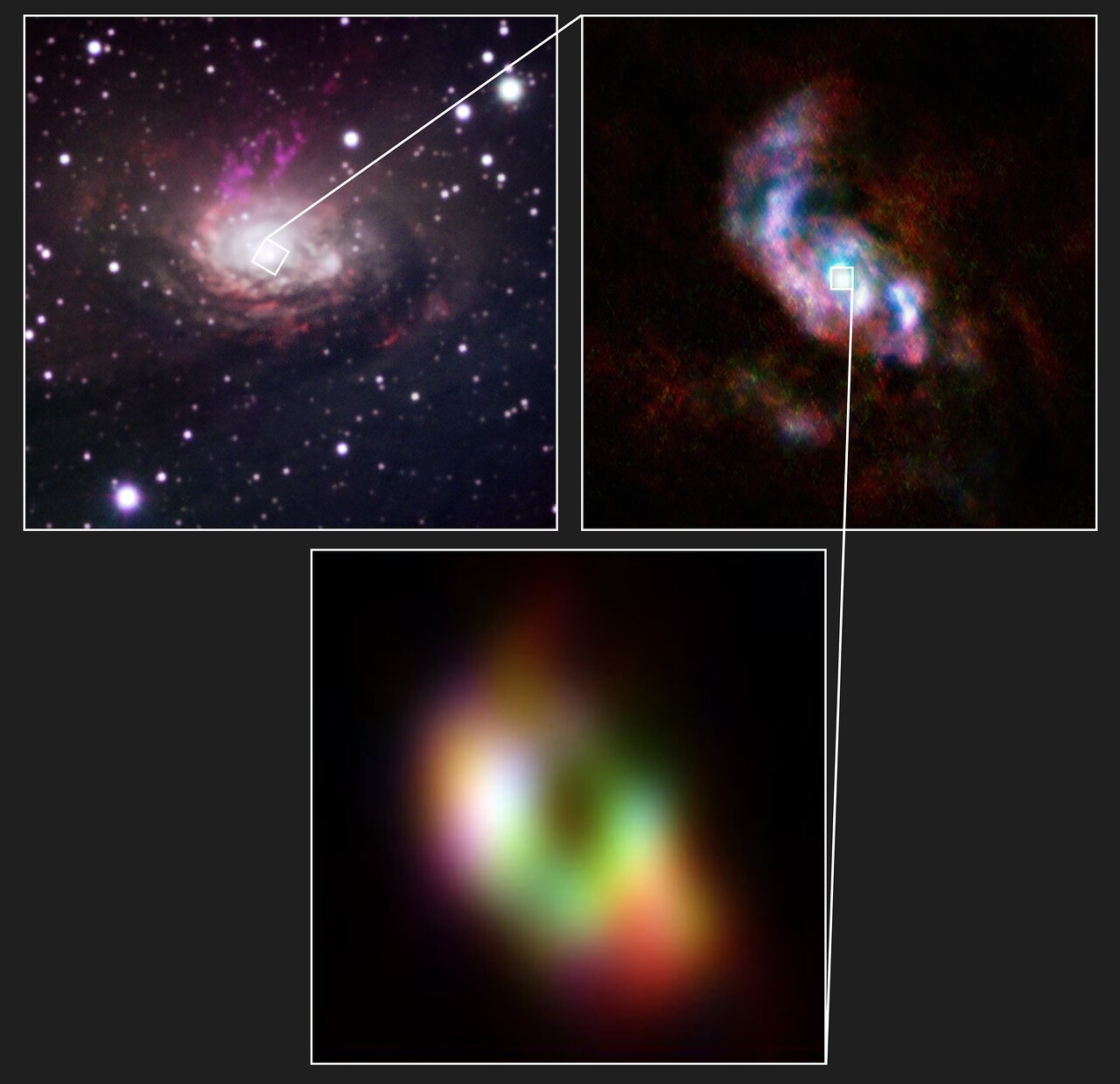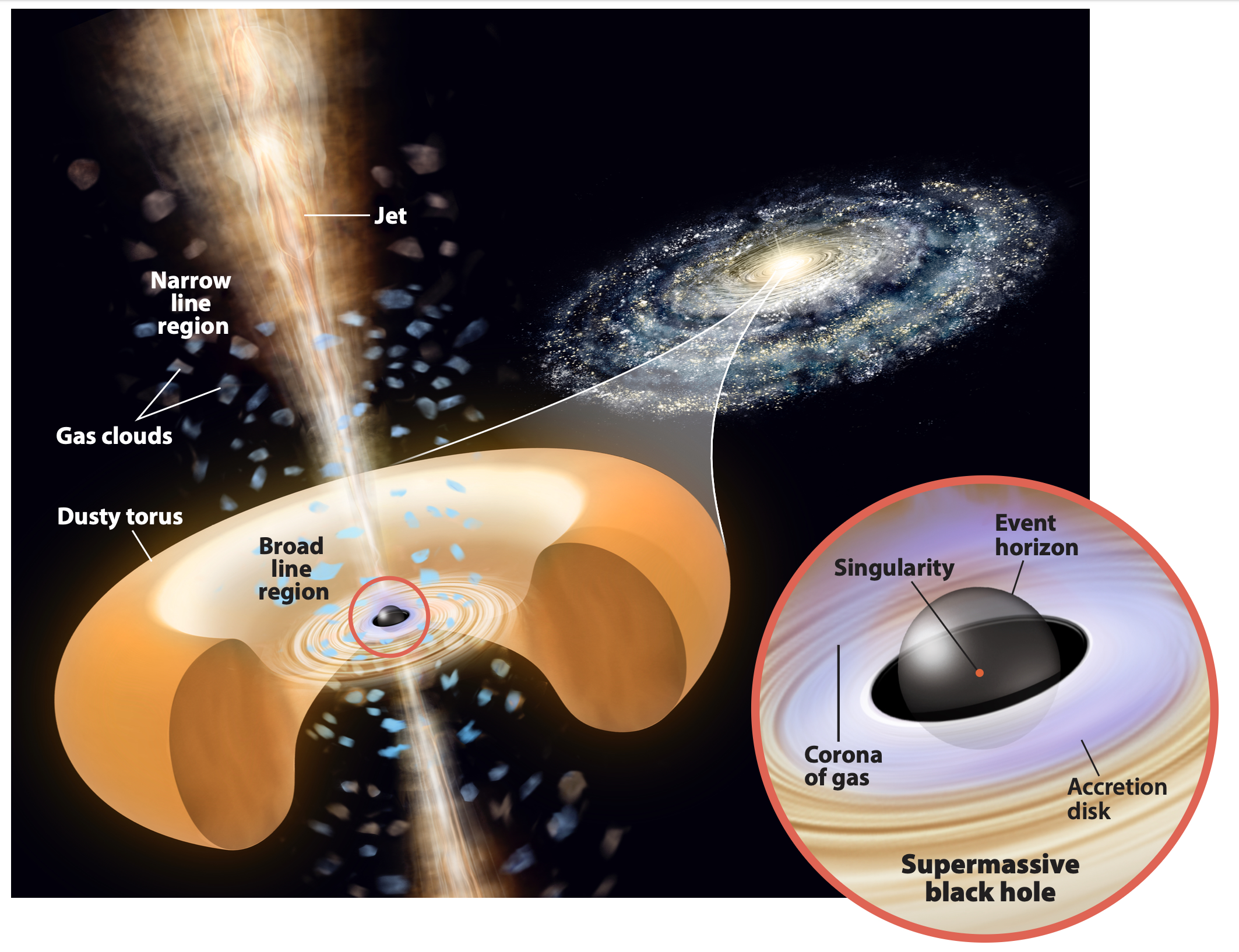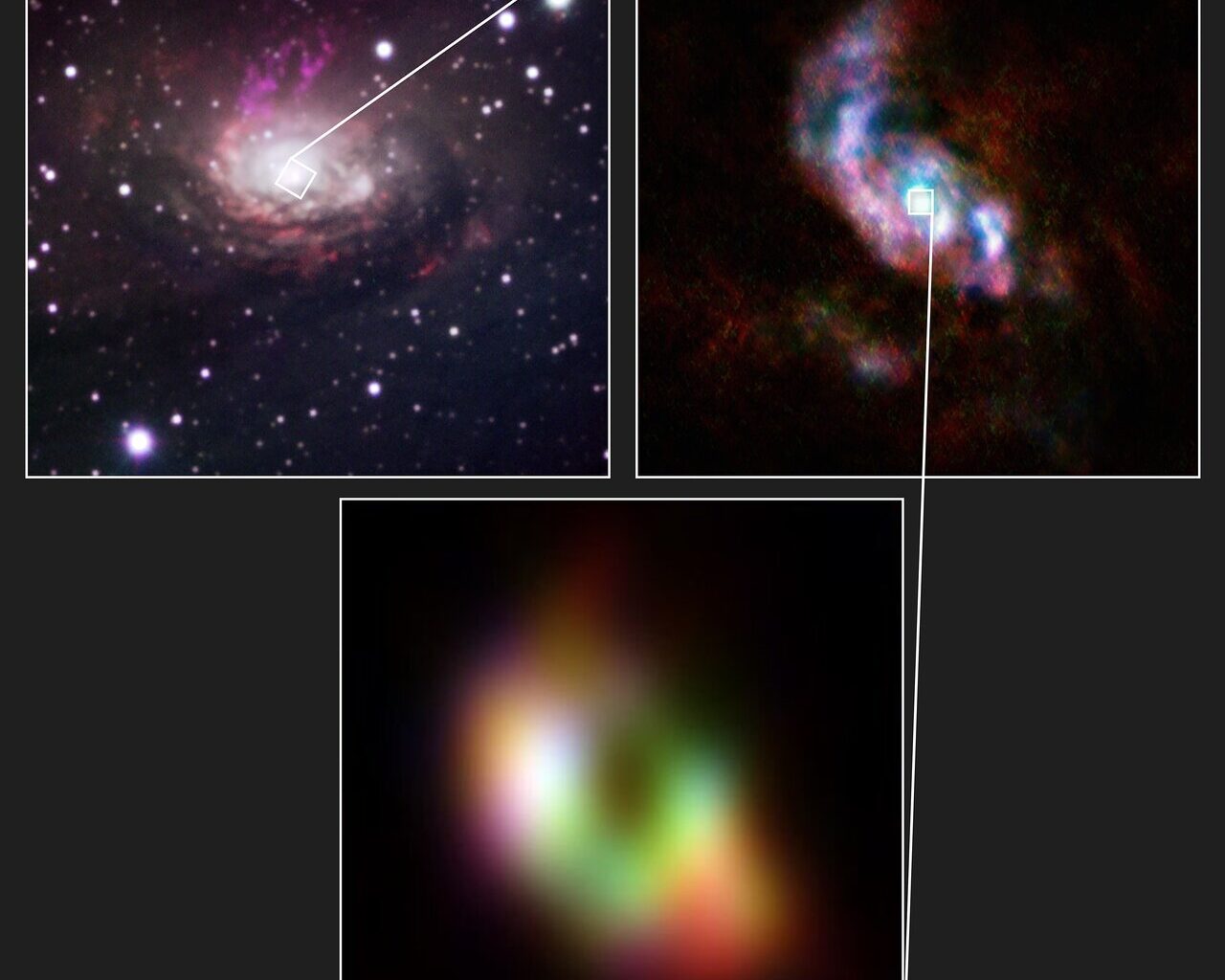Back to Article List
A new study using observations from the ALMA radio observatory has discovered the Circinus Galaxy’s central black hole is fueling itself through two spiral arms that funnel material inward.

The Circinus Galaxy is located about 13 million light-years away, and is shown in the photo at top left. Gas is streaming towards the black hole at the center of the galaxy through two spiral arms depicted in the top right. These arms feed a doughnut-shaped cloud, or torus, around the black hole, seen at the bottom. Credit: ALMA(ESO/NAOJ/NRAO)/ESO/W. Goesaert et al.
Astronomers have, for the first time, observed two large spiral arms of gas actively funneling material into a supermassive black hole (SMBH), providing a detailed look at its feeding mechanism.
Using the Atacama Large Millimeter/submillimeter Array (ALMA) to study the SMBH in the Circinus Galaxy, these spiral arms were found to generate negative torque, stripping gas of its angular momentum and facilitating its inward flow from the circumnuclear disk.
This finding offers a potential solution to the puzzle of how SMBHs maintain a steady fuel supply, establishing a direct channel for material transport within active galactic nuclei (AGN).
The observed feeding process is highly inefficient, with over 88% of the inflowing material being ejected in powerful outflows before reaching the SMBH’s accretion disk.
For the first time, astronomers have gotten a detailed look at how a supermassive black hole (SMBH) eats, discovering two large spiral arms of gas that are funneling its meals inward.
The finding, made using the Atacama Large Millimeter/submillimeter Array (ALMA) in Chile, has been accepted for publication in Astronomy & Astrophysics. It offers a potential solution to a key puzzle about how a SMBH maintains a steady supply of fuel, revealing spiral arms that act as a direct channel. SMBHs are notoriously messy eaters, and unsurprisingly, researchers also found that most of the material is ejected from the arms before it’s consumed.
“In cartoons, you sometimes see a disk of gas disappearing into a black hole as if it were a whirlpool. However, if there is no supply channel, such a disk will continue to spin around at a decent distance forever,” Wout Goesaert, a Ph.D. student at Leiden University who led the study, said in a press release. “So you need a passageway of some kind. And that’s where our spiral arms come into play.”
Close peek at an Active Galactic Nucleus
While studying ALMA observations in 2023, the team focused on the SMBH at the heart of the Circinus Galaxy. With a mass 1.7 million times that of our Sun, it powers an active galactic nucleus (AGN) — an extremely luminous accretion disk around the supermassive black hole at the center of a galaxy.
The unified model of AGN states that all feeding supermassive black holes have essentially the same structure. Closest to the black hole is a hot accretion disk, which contains material swirling directly into the black hole. Beyond that, stretching up to several light-years across, is a dense, doughnut-shaped structure of gas and dust called a torus. This torus is embedded within a much larger structure of material, a sprawling disk known as a circumnuclear disk (CND). How material is transported through the CND to feed the inner torus and finally the black hole has long been a mystery for astronomers.
The high-resolution ALMA images allowed the team to map this region in unprecedented detail, revealing two spiral arms that are part of the massive, 163 light-year-wide CND. This disk is so massive — containing roughly 32 million solar masses — that its rotation is governed more by its own gravity than the pull from the black hole.

The unified model of AGN states that all AGN contain the same components, simply viewed at different angles. From the inside out, AGN contain a supermassive black hole; an accretion disk and a hot corona of gas; a fast-moving gas region; an obscuring torus of dust; and a slower-moving gas region. Some AGN have powerful jets, which may be pointed toward Earth. Credit: Astronomy: Roen Kelly
A messy feeding frenzy
Rotating material like that in the CND has angular momentum associated with its movement. According to the study, the two arms generate negative torque, or a force in the opposite direction to the rotation of the surrounding gas. This strips the gas of its angular momentum, causing it to slow down and effectively fall toward the torus, flowing inward through the arms.
In essence, the arms act like conveyor belts, funneling material from the outer CND directly into the eight-light-year-wide torus. The gas rushes inward at astonishing speeds, reaching up to 93,200 mph (150,000 km/h). This inflow transports a massive amount of material — between 0.3 and 7.5 solar masses per year.
The discovery also confirmed just how messy a SMBH’s dinner can get. Despite the massive inflow, the models show it’s an incredibly inefficient process. A powerful outflow ejects over 88 percent of the incoming material before it ever reaches the black hole’s accretion disk.
The initial results have opened up a new set of questions for the research team. They now hope to discover why so little matter ultimately reaches the black hole, whether all SMBHs use similar spiral arms to feed, and what becomes of all the ejected material.

